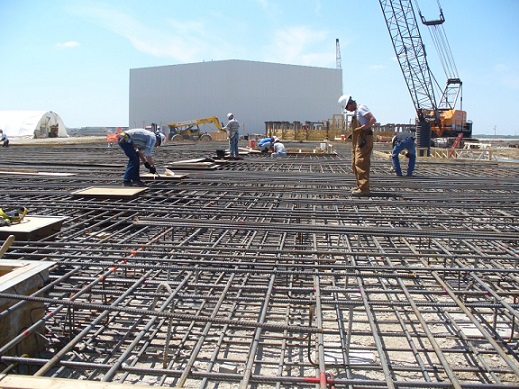
Starting a New Construction Project? Here’s What You Need to Know About the Various Stages of Construction
There are legitimate reasons why a business would want to construct a new building instead of leasing office space. They may want an asset they can leverage in the future, to have enough space for a growing team, or to even have excess space they can lease to individuals and other businesses to make it one of their income streams.
Regardless of the reasons, businesses that do this have an idea they want to turn into a reality. For this, they turn to reputable construction companies. Most construction projects follow the same path and stages, and knowing what happens in each will ensure you are more informed about what goes on, whether you want a huge office building or a small one for your growing business.
Conception, Design, and Planning
Project conception is the first stage in any construction project, and it entails ensuring the owner, architect, and other engineers have thought through the idea for the project. Conception typically follows finding the right location for the project and then thinking through the specifications for the building codes depending on the jurisdiction.
A feasibility study is an integral part of this stage, and it entails checking whether the solutions proposed by the engineers align with the project’s objectives. Once the conception is done, the construction manager, the architect, and the owner move on to the design stage. At this stage, they develop a roadmap that further details the project’s purpose and any hurdles it might encounter.
Design happens before the procurement of goods or services required for the project and before it begins. The architect, their team, and other engineers work on putting all the client’s ideas onto paper. Discussions about the size of the building and how the occupants will use it are held between the client and the architect so the latter can better understand the design.
The design stage is about showing what the different spaces will be and what materials will be used. Cost evaluations also happen at this stage, and the owner can open up the bidding process for the goods, materials, and services they need for the project depending on the information they have.
Once all this is done, the project planner divides the project into smaller chunks and establishes timelines for completing different stages.
Building Permits
It is necessary to ensure you have all the required permits before the project’s commencement. Since federal, state, and local authorities have to approve different aspects of the project, getting all the permits you need can take some time.
Working with an experienced project manager is critical at this stage because they know what permits you need and how best to ensure the process goes smoothly and takes as little time as possible.
Pre-construction Stage
Sometimes, this stage is divided into smaller ones. All the work at this stage is done after the planning, the design is finalized, and the labor and supplies have been made available before physical construction begins.
Pre-construction services can help owners develop a plan for calculating cost and scope and for the team to develop a schedule that ensures timely completion. At this stage, the project team is brought together, the project’s foundation is aligned, and a communication hierarchy is established. Communication hierarchies are essential for reducing delays.
Clients can also hire a lawyer to handle any legal issues that might come up depending on the project. The construction team will also prepare the site, evaluating its viability and how it will impact costs. The cost estimate also looks at regulatory requirements, materials, labor, and schedules. The contractor works on everything the project requires to ensure it meets budgetary requirements.
Procurement
At this stage, the team obtains everything it needs, including labor, equipment, and materials.
The complexity of the procurement stage and process will depend on the project’s size, the availability of the different resources and materials like heavy machinery insights at Boom & Bucket, and the expected start date.
The general contractor will also issue minor contracts for what the project needs. They will also share the plans with the relevant parties to ensure they can easily obtain what the project requires. Working with reliable subcontractors can keep the cost of construction low as they can leverage the economy of scale to get better prices from their suppliers. They can then pass on these savings to the main contractor and then to the client.
Construction Phase
It is a good idea to have a meeting before construction begins to ensure everyone understands what is expected of them and to pass on important information such as health and safety rules, contact information for important parties, quality control, possible challenges, and more.
It is after this important meeting that the work begins. Many projects start with leveling the construction site and the surrounding area to allow easy movement of people and equipment. Hiring companies specializing in earthwork to tackle site prep is common. Koehncs.com, for example, has state-of-the-art equipment to tackle projects of different scales.
All of the planning and procurement will start to pay off once the construction begins. Contractors, subcontractors, and everyone working on the projects will work to transform an empty piece of land into a building depending on the design and other parameters set by the engineers, project manager, architect, and everyone involved in the planning stage.
The main contractor controls the project and liaises with its owner to inform them about progress. They can set meetings and inspections at regular intervals to ensure everything is going as expected. They also work with the design team to ensure the construction follows the approved design and to approve any changes to the plan.
Every team involved should know what part of the project it will handle from the meeting before construction begins. Remember that some subcontractors may require a portion of the project to be completed before starting work, so coordination and strict deadlines are critical.
Mechanical, Plumbing, and Electrical
Plumbing, electrical, and mechanical (HVAC) systems are often designed by one or multiple engineering firms. These firms are subcontractors working under the main contractor and they handle HVAC systems, lighting, ventilation, gas lines, internet cabling, water and wastewater, and more.
Since these systems run within the walls of the building and underneath it, installation, testing, and inspections start at the commencement of the construction stage to ensure they are done right. If not, there may be repeated work if a cable or conduit needs to run inside a wall or beneath a floor.
Post-construction Stage
It may seem like all work is done at this stage, but it is not. The pre-construction stage ensures the owner has no issues once the contractor hands over the building. This stage starts with demobilizing all the resources used during the construction, including rentals. The crew is also instructed to clean up the site to minimize the project’s impact on the environment. All subcontractors who have completed their portion of the work are freed so they can work on other projects if they like.
The engineer and the project manager will then thoroughly inspect the building to ensure everything is done right. They will list everything they are not happy with and what they feel a subcontractor still needs to complete. The project manager works with the contractor and their subcontractors to rectify any issues they find.
The last step is handing the owner all information about the project, drawings, insurance, legal documentation, permits, and everything else they need to take ownership.
A construction project can be very involved depending on its complexity. Hiring a contractor who brings all the resources you need together to complete the project within a reasonable timeframe and to the highest standards possible is critical.

